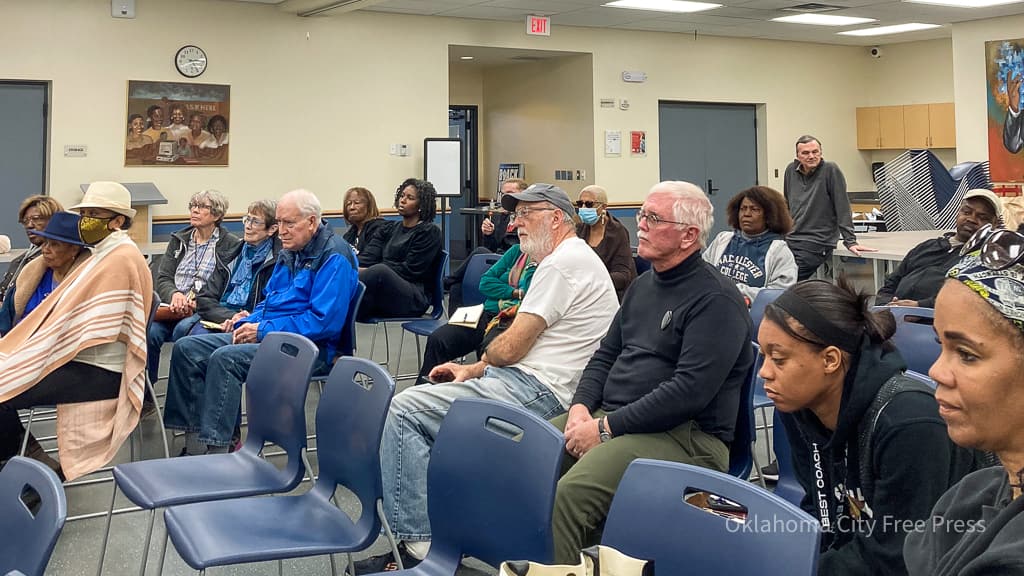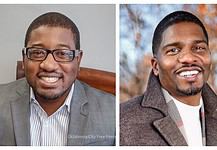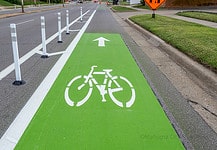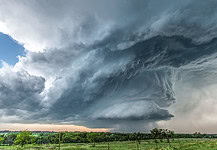Last Updated on January 5, 2024, 12:01 AM | Published: December 10, 2023
OKLAHOMA CITY — Leaders from city government, activism, and economics education gathered Saturday at the Ralph Ellison Library branch on NE 23rd Street for a public panel discussion over the proposed new arena.
Tuesday, the public will vote on whether to establish an extension of the current penny sales tax for a new NBA arena for the OKC Thunder basketball team.
The penny tax is currently used to fund the MAPS 4 projects in OKC and has funded previous MAPS projects paying cash for the projects as the money was collected. However, this plan calls for the penny tax to be used to pay off loans to build a new arena sooner.
Ward 7 City Councilor Nikki Nice and UCO economics professor Travis Roach, Ph.D. joined organizer Nabilah Rawdah of OK Progress Now and moderator, former state senator Connie Johnson, to voice their concerns over the proposed $900 million taxpayer cost to construct a new home venue for the OKC Thunder.
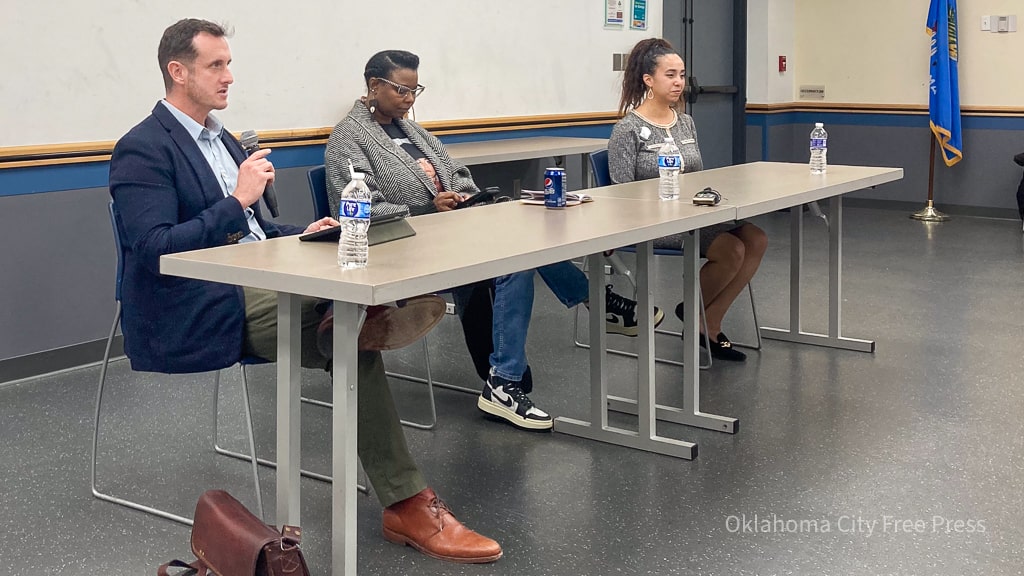
The panelists expressed their doubts regarding the touted economic benefits of a new arena, questioned the strength and efficacy of the proposed Community Benefits Agreement, and questioned the legitimacy of some studies and statistics championed by arena proponents.
For many of the Eastside residents in attendance, however, the most pressing concerns were about how the arena project would affect the timeline of some long-promised, hotly anticipated projects scheduled for the community.
“I’m asking you all to just reconsider and let us really take a look at what’s happening,” Nice said in her opening remarks for the discussion. “We can support the Thunder and still say ‘please bring more to the table.’”
Economic Impact
Central to seemingly all opposition to the current arena proposal is the notably high percentage of the cost that would be covered by taxpayers under the deal struck with Thunder ownership.
The terms of the deal call for 95% of the cost to be covered from existing city funds, and short-term loans, then repaid through an extension of the penny sales tax over the next half-decade. It’s a comparatively high percentage when looking at other recent NBA arena construction deals, the majority of which show costs split more evenly between team owners and taxpayers.
Proponents say it’s a small price compared to the economic benefits of having a thriving NBA franchise and a bustling arena complex Downtown, and have touted an economic impact report from Arizona’s Applied Economics claiming a potential per-year city benefit of nearly $600 million.
Prof. Roach isn’t convinced.
“We can look at our own experience in Oklahoma City,” he said. “We can watch what happened from 2000 to present, and if it had the impact that the report that the greater chamber commissioned, we would see a little blip on the graph. We would see a noticeable change. And it’s just not there.”
He claimed that any economic benefit from even the current stadium appears negligible, evidenced by periods of inactivity in recent years.
“We can see, in our own recent past, when the stadium was shut down during COVID and we did not have any fans going into experience or taking part in that,” he said. “And again, our unemployment rate continued to fall, our GDP continued to grow. It’s as if nothing happened.”
According to Roach, Applied Economics is “a consulting firm” (a designation echoed on the group’s own website) that was selected with little regard to how accurate their economic predictions have historically been.
Community Benefits Agreement
For Councilor Nice, one of the central issues of the proposal concerns the labor required to build, manage, and operate a new arena, and the Community Benefits Agreement (CBA) that was recently passed as a resolution to offer protections for the pay, job security, and diversity of that labor.
“We still don’t have what we need in a Community Benefits Agreement,” Nice told the audience in her own opening remarks. “It was a resolution, and that can be continuously changed. So that doesn’t mean that it is set in stone.”
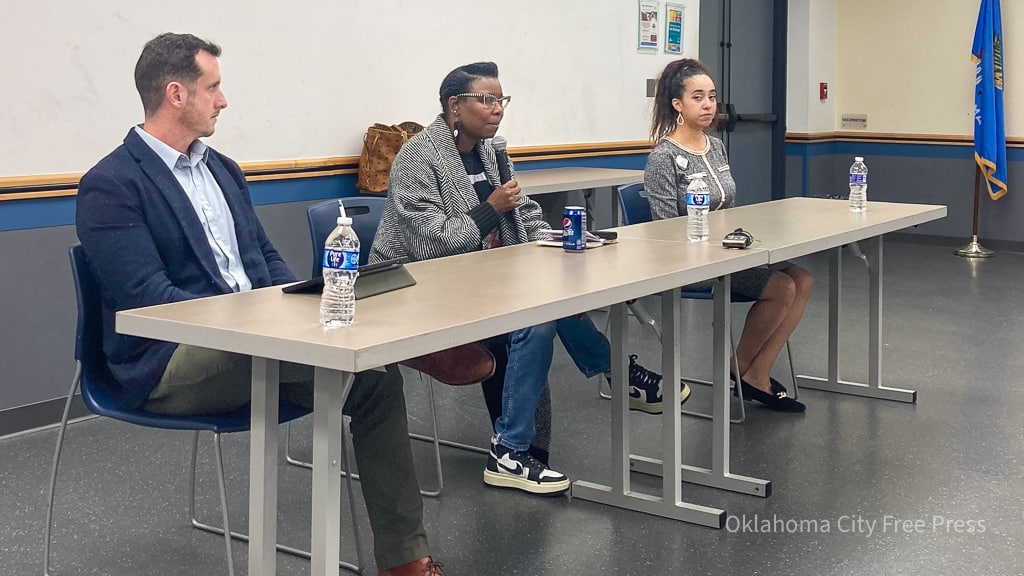
That resolution – introduced by Ward 2 Councilor James Cooper and passed by city council in September – lays out demands that construction and operational labor for a new arena be negotiated with union leaders and be staffed by diverse and disadvantaged populations from around the city. It was modeled on a similar CBA adopted by the Bucks and the city of Milwaukee.
“It’s not law, it’s not an ordinance,” Nice said, addressing a question about any leverage or guarantees the city might have to hold Thunder ownership to the terms of a CBA. “It’s going to take our community to say ‘we want this CBA implemented.”
Following the panel’s conclusion, Free Press asked Nice about what kind of effectiveness could be expected by city residents demanding a stronger, more enforceable CBA. Nice said she believes sustained pressure from residents can have a measureable effect on the city council.
“In my opinion, there’s power in showing up,” she told us. “We’ve seen it happen in a couple of other events that the city has had, and it influenced some of the council members in ways that they weren’t leaning going into that conversation. So showing up matters.”
‘Crowding out’
For the gathered Eastside residents waiting to ask questions of the panelists, one of the most pressing concerns was the possibility that construction on a new arena would delay or supersede some long-planned MAPS projects for the community, in particular the planned Clara Luper Civil Rights Center.
“Construction projects of this size drive up the costs of other projects in the area,” said Rawdah. “And usually, MAPS projects, from the time they’re passed, take about ten years to completion. With this, we’re going to have to rush it through in about six years. So it’s going to be sucking up a lot of other projects and resources. So yes, this could potentially delay the Clara Luper project.”
Prof. Roach agreed, again bringing up the volatility and difficulty of determining the true economic impact through predictive reports.
“I have no knowledge as to whether or not one would come before the other,” he said, “but I can say what you’ve just described is the ‘crowding out effect.’ By doing this, we’re reducing it in another area, and so again, we might have had an economic impact report for that other project, but now that goes away because it’s not being done because this other one’s being done.”
Fair Share?
The final question posed to the panel by moderator Johnson was a lay-up, asking pointedly if the Thunder’s proposed $50 million share of new arena costs – roughly 5% of the proposed total cost – is a fair share in comparison to other NBA teams.
Councilor Nice and Prof. Roach took turns handing over the microphone and responding with the same one-word answer:
“No.”
Voting Information
Polls will be open from 7:00 am to 7:00 pm on Tuesday, Dec. 12.
Residents of OKC are eligible to vote in the special election and eligibility is not restricted solely to those with an OKC mailing address. This is because some residences with zip codes in neighboring cities technically fall within OKC City limits. These areas include:
- Edmond
- Bethany
- Spencer
- Yukon
- Choctaw
- Norman
- Harrah
- Jones
- Luther
- McCloud
- Mustang
- Newalla
- Piedmont
Click here to find your polling place or to determine your eligibility to vote.
Brett Fieldcamp has been covering arts, entertainment, news, housing, and culture in Oklahoma for nearly 15 years, writing for several local and state publications. He’s also a musician and songwriter and holds a certification as Specialist of Spirits from The Society of Wine Educators.
